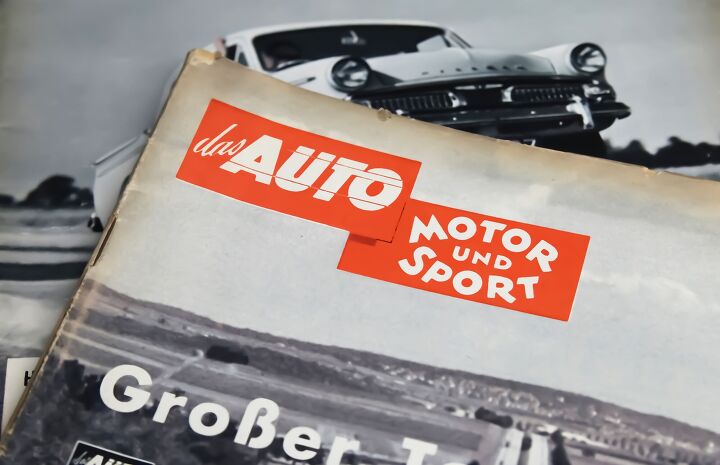QOTD: Influenced by the Automotive Press?

After last week's story on how Consumer Reports slapped the "avoid" label on the popular Ford F-150, I was going to ask you how much CR shapes your purchase decisions. The magazine is popular, and I know a lot of people, both car enthusiasts and not, who trust it.
Yet sometimes CR says not to buy a car and it sells well. Or vice versa.
After some reflection, I figured opening this QOTD to the larger automotive press would generate a more robust discussion.
Of course, the automotive press has changed. Your local newspaper likely no longer has its own automotive critic -- and if it's publishing reviews at all, they're probably syndicated. That might affect how you, the consumer, do your research.
I'd hope you trust us -- you may not agree with us, or like my style or the style of others who write reviews here, but you should know we're honest. But I am not naive -- I suspect that when it comes time to shop for your next new car, we're just one stop on the dial, so to speak.
I'd bet my meager savings that you're looking at us, Jalopnik, the buff books, the car-shopping giants like Cars.com, and so forth and so on. And, of course, Consumer Reports.
So let's make this a multi-part QOTD. Does the automotive press factor into your car-buying decisions? If so, how, and how much? Which sites are you reading when shopping, and which are you reading just because you're daydreaming about a certain car? Which do you read just for fun? Do Consumer Reports recommendations matter to you? What about Cars.com, KBB, AutoTrader, Consumer Guide, et al? Are you reading the buff books for car-shopping advice, or more so because you want to see who wins the most recent comparison test?
Sound off below.
[Image: Ralf Liebhold/Shutterstock.com]
Become a TTAC insider. Get the latest news, features, TTAC takes, and everything else that gets to the truth about cars first by subscribing to our newsletter.

Tim Healey grew up around the auto-parts business and has always had a love for cars — his parents joke his first word was “‘Vette”. Despite this, he wanted to pursue a career in sports writing but he ended up falling semi-accidentally into the automotive-journalism industry, first at Consumer Guide Automotive and later at Web2Carz.com. He also worked as an industry analyst at Mintel Group and freelanced for About.com, CarFax, Vehix.com, High Gear Media, Torque News, FutureCar.com, Cars.com, among others, and of course Vertical Scope sites such as AutoGuide.com, Off-Road.com, and HybridCars.com. He’s an urbanite and as such, doesn’t need a daily driver, but if he had one, it would be compact, sporty, and have a manual transmission.
More by Tim Healey
Latest Car Reviews
Read moreLatest Product Reviews
Read moreRecent Comments
- UnoGeeks Great information. Unogeeks is the top SAP ABAP Training Institute, which provides the best SAP ABAP Training
- ToolGuy This thing here is interesting.For example, I can select "Historical" and "EV stock" and "Cars" and "USA" and see how many BEVs and PHEVs were on U.S. roads from 2010 to 2023."EV stock share" is also interesting. Or perhaps you prefer "EV sales share".If you are in the U.S., whatever you do, do not select "World" in the 'Region' dropdown. It might blow your small insular mind. 😉
- ToolGuy This podcast was pretty interesting. I listened to it this morning, and now I am commenting. Listened to the podcast, now commenting on the podcast. See how this works? LOL.
- VoGhost If you want this to succeed, enlarge the battery and make the vehicle in Spartanburg so you buyers get the $7,500 discount.
- Jeff Look at the the 65 and 66 Pontiacs some of the most beautiful and well made Pontiacs. 66 Olds Toronado and 67 Cadillac Eldorado were beautiful as well. Mercury had some really nice looking cars during the 60s as well. The 69 thru 72 Grand Prix were nice along with the first generation of Monte Carlo 70 thru 72. Midsize GM cars were nice as well.The 69s were still good but the cheapening started in 68. Even the 70s GMs were good but fit and finish took a dive especially the interiors with more plastics and more shared interiors.


































Comments
Join the conversation
It's possible to learn things about cars by reading the automotive media, but you have to read way under the surface. On the surface, everything about every car is great, because automotive media may be the purest example of access journalism there is. But the reviewers who really care about their audiences will put in subtle tells. For instance, if you read "the car rode beautifully, with just a hint of undamped movement from the 20" wheels," you iknow that the car with the big wheels clomps harshly over the smallest bump and you should avoid it.
But even with careful reading they are no substitute at all for a short test drive. I make my decisions mostly through driving experiences.
I used to religiously purchase Lemon-Aid and Consumers Reports prior to acquiring a vehicle. And we purchased a vehicle based on the recommendation of a Toronto based automotive writer who publicly wrote about purchasing that make/model for his family. We were very pleased with it.
Otherwise I believe that 'automotive journalism' is largely an oxymoron and they primarily shill for the manufacturers. Nearly every model is 'improved' over the previous one. Cars that were not competitive are suddenly 'competitive'. And they almost always test and recommend the 'fully dressed' version rather than the base version.
That is one reason why I originally started reading/viewing TTAC. To get a different perspective.